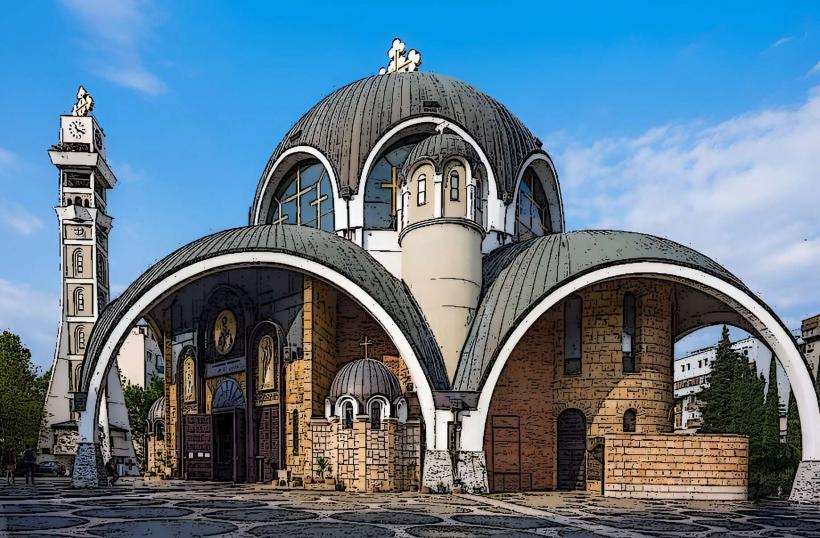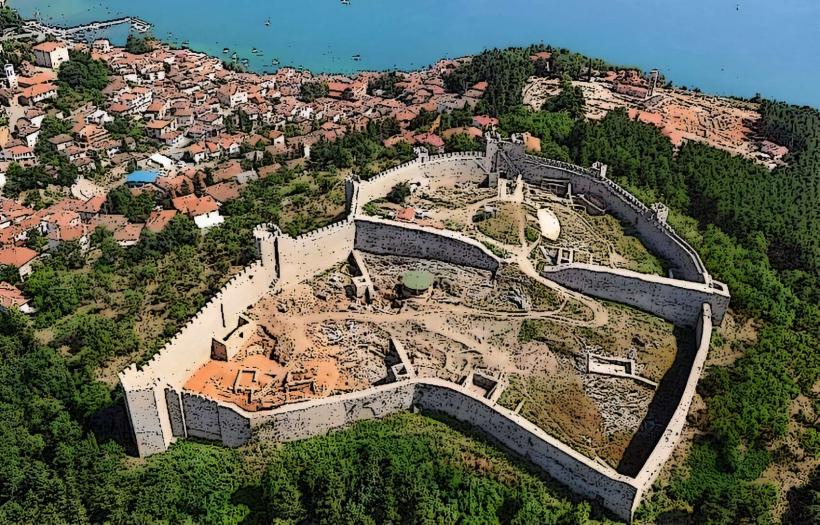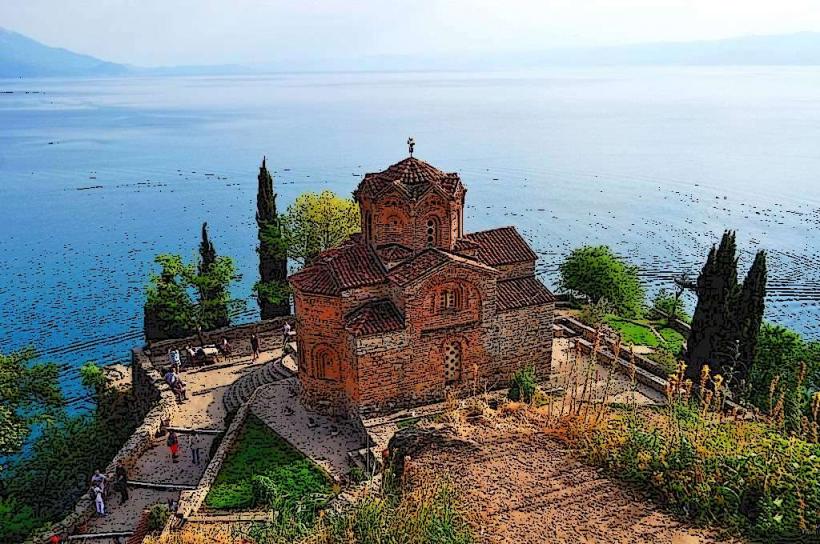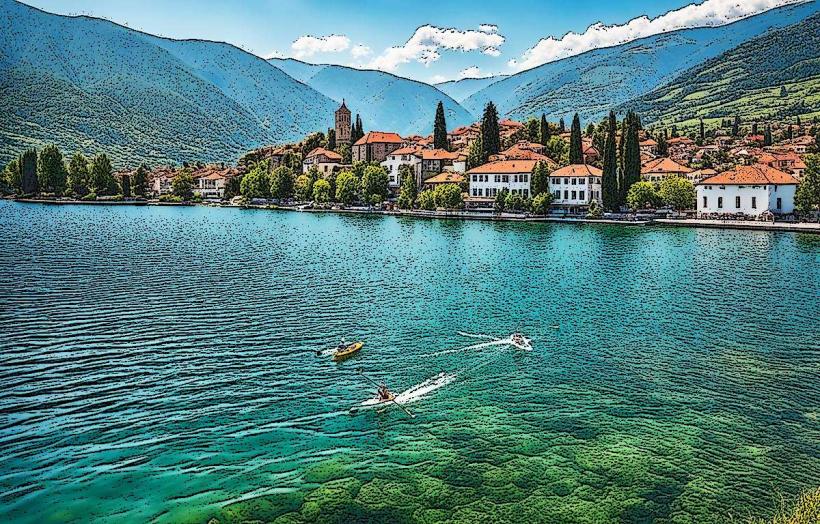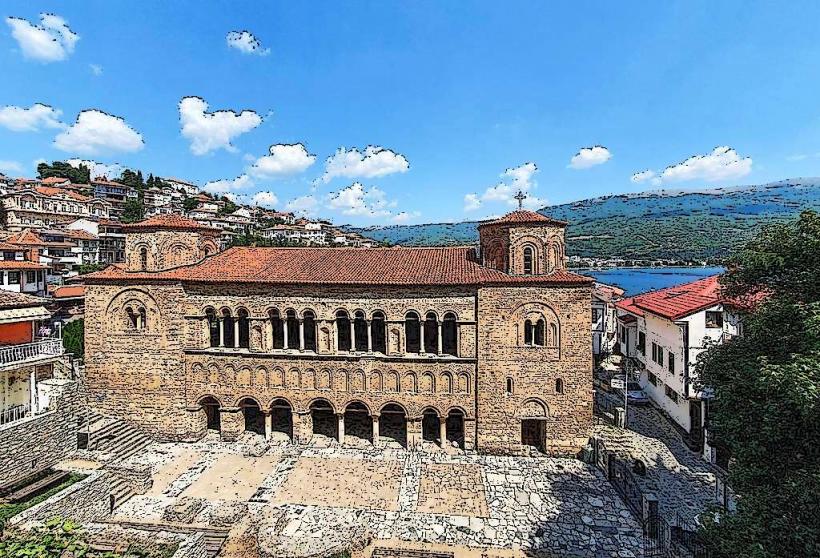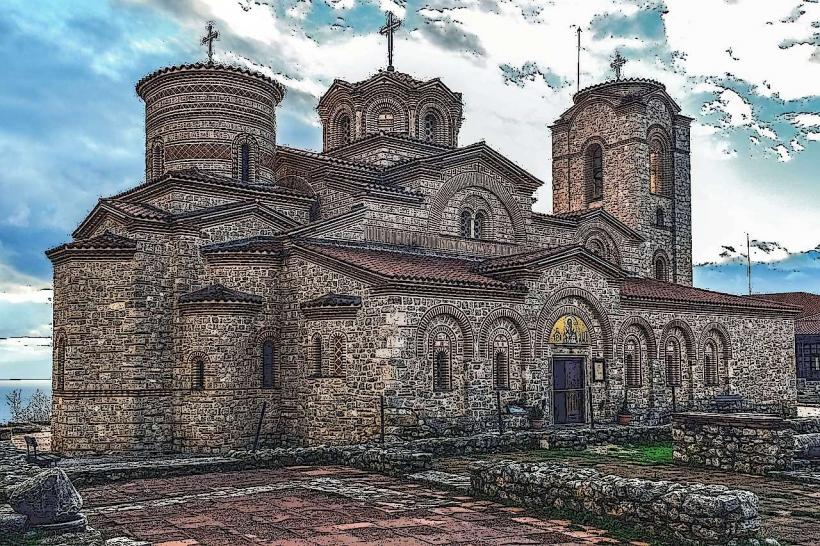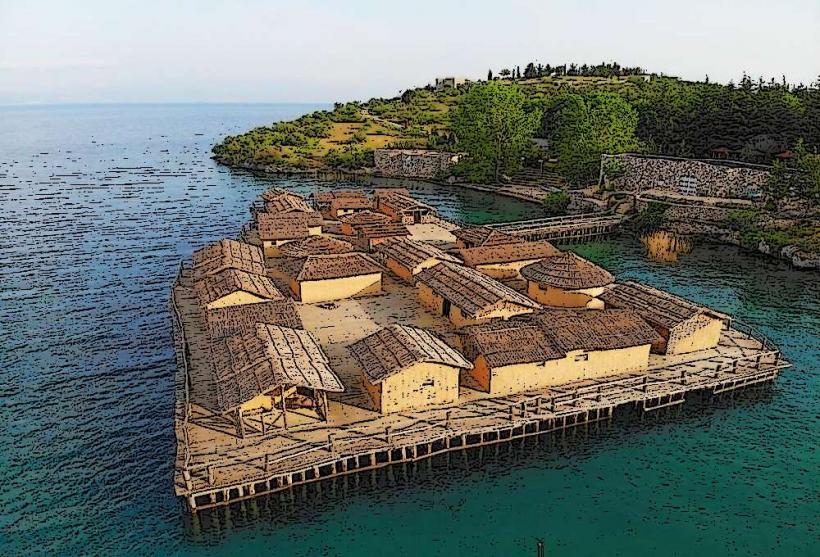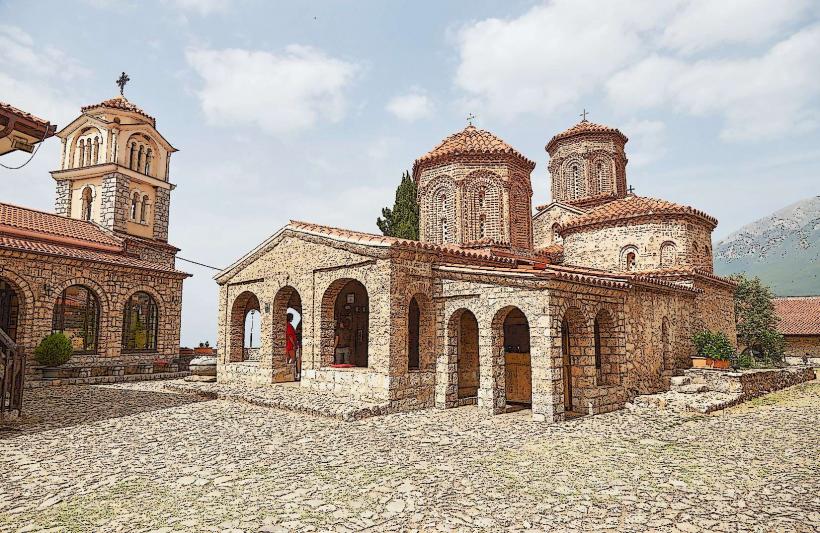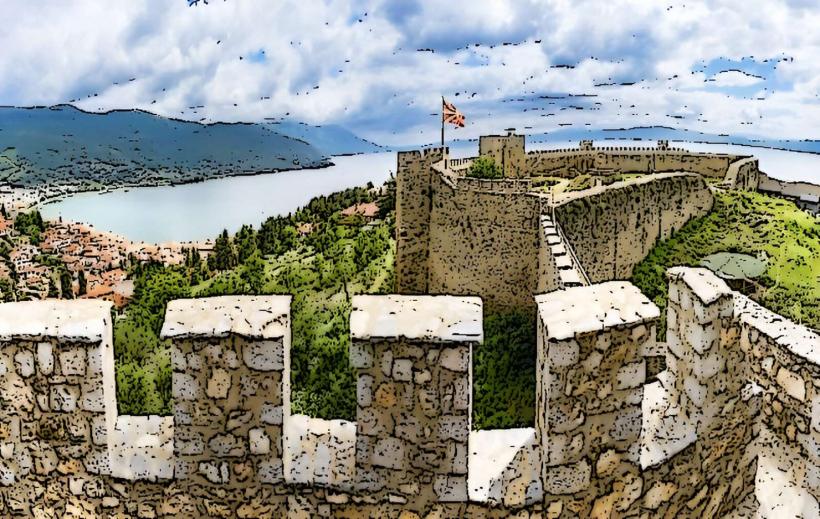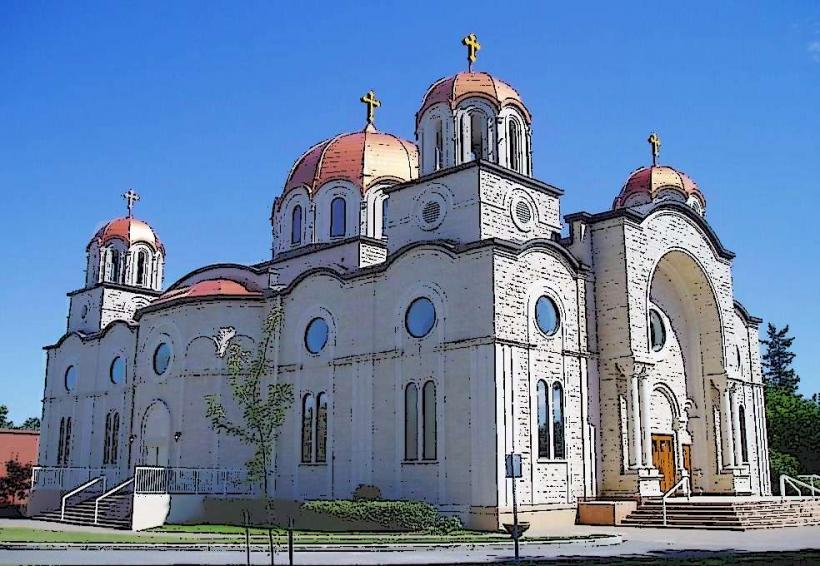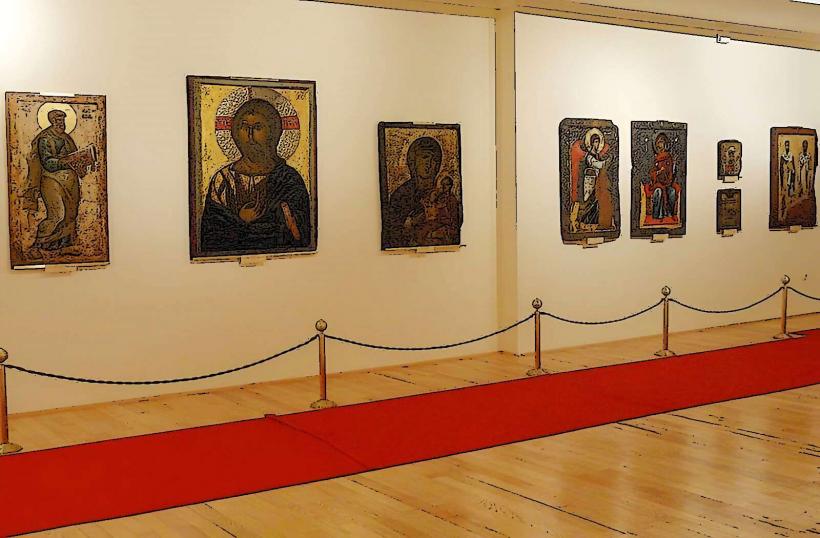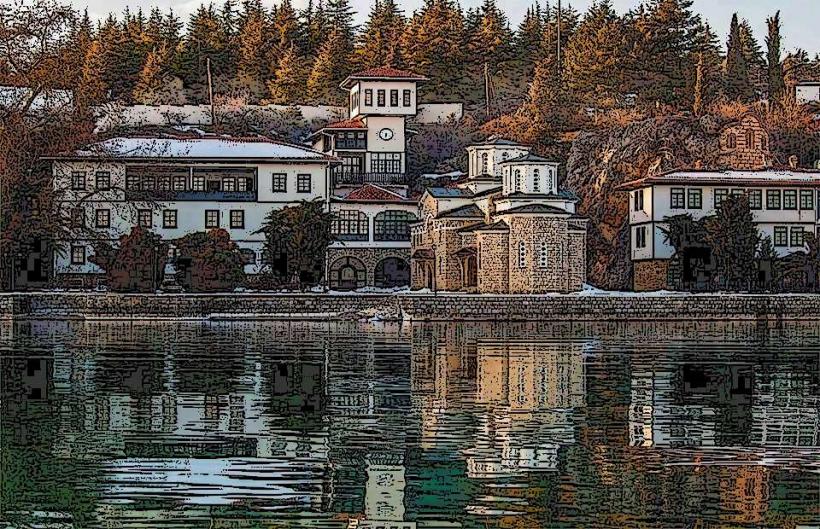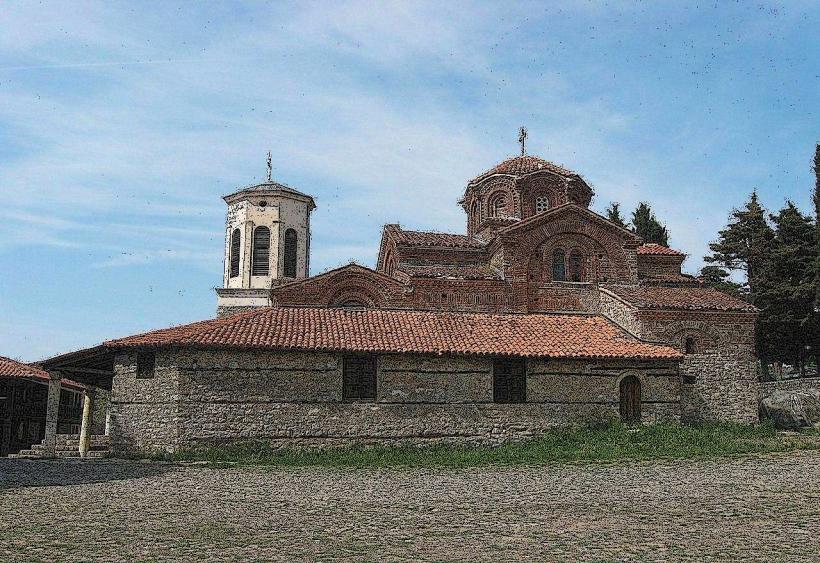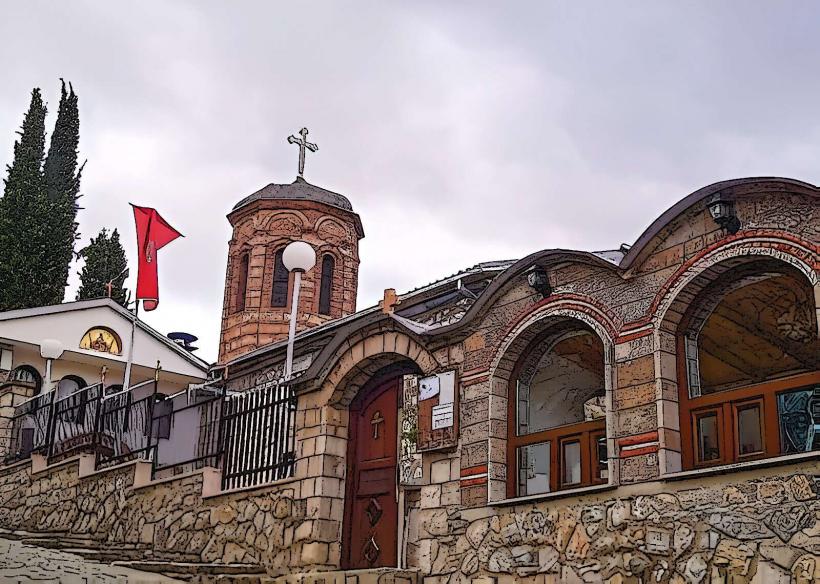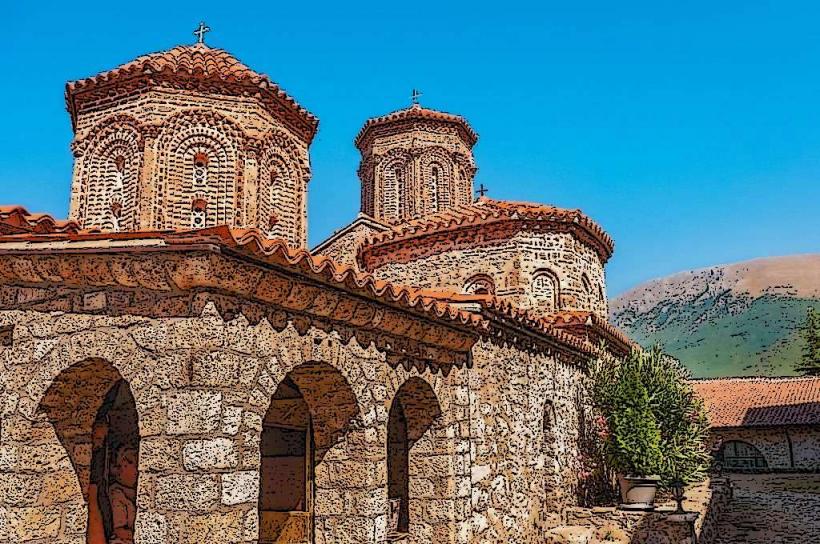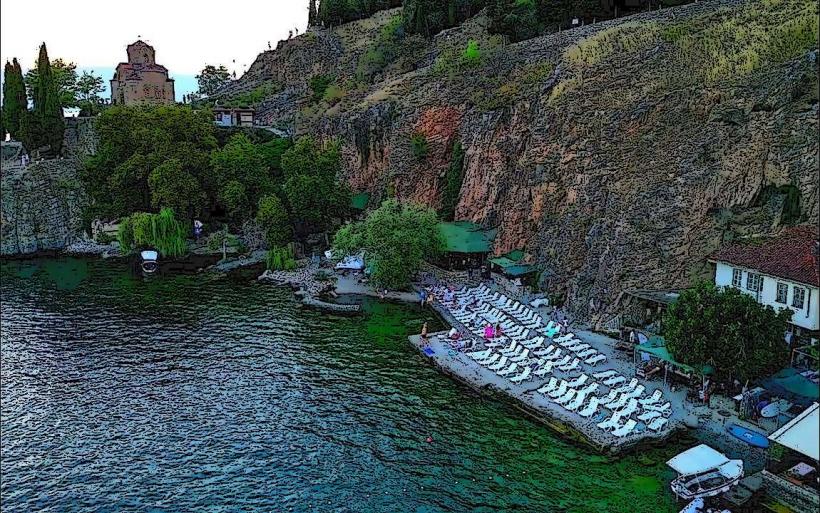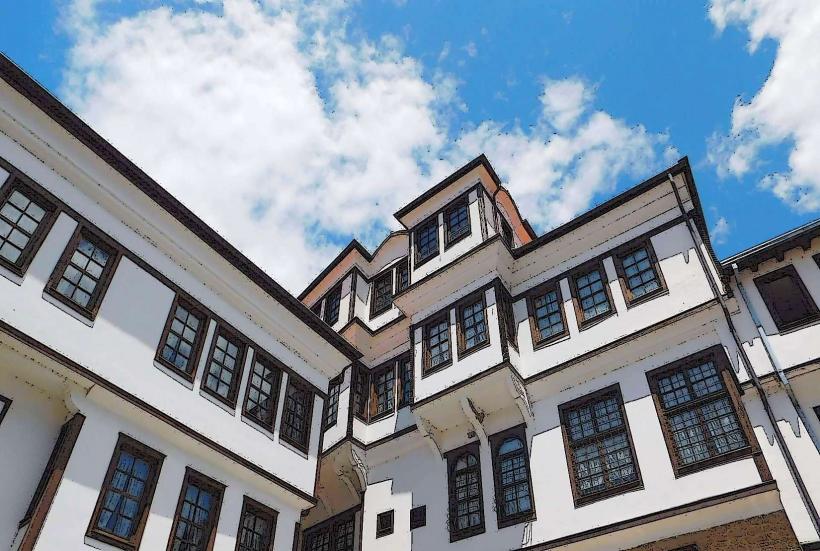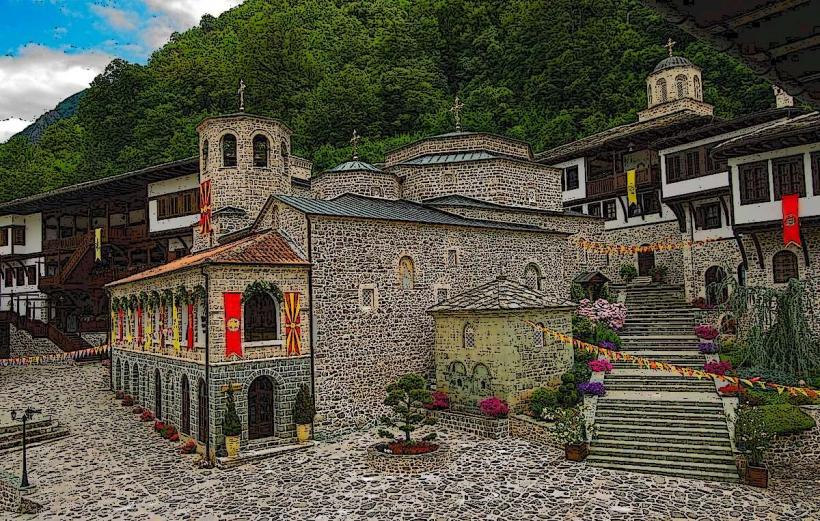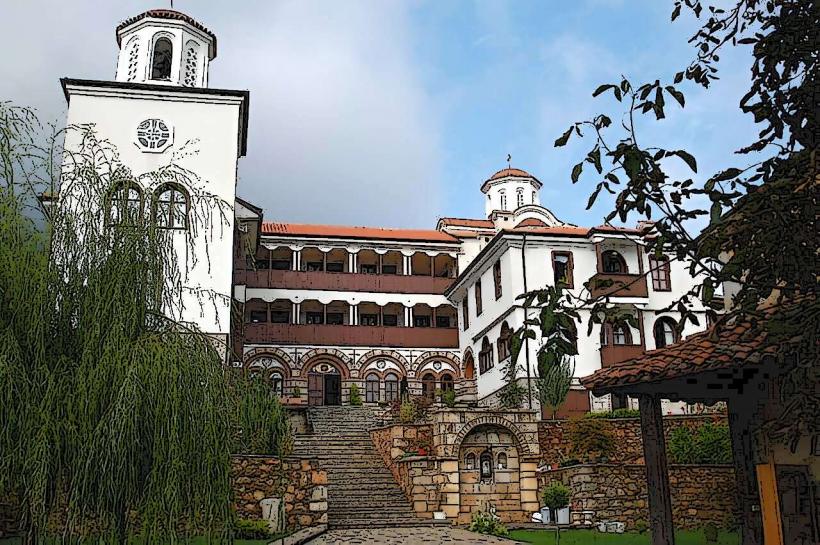Information
Landmark: Church of Saints Clement and PanteleimonCity: Ohrid
Country: North Macedonia
Continent: Europe
The Church of Saints Clement and Panteleimon (in Macedonian: Црква Свети Климент и Пантелејмон) is a prominent Orthodox Christian church located in Ohrid, North Macedonia. It is a key religious, historical, and cultural landmark, closely associated with the legacy of Saint Clement of Ohrid, a disciple of Saint Cyril and Saint Methodius, and an important figure in the development of the Glagolitic script and Orthodox Christianity in the Balkans.
Location:
- The church is situated on Plaošnik Hill, overlooking Lake Ohrid, in the city of Ohrid, a UNESCO World Heritage Site.
- Its elevated position provides stunning views of the surrounding area, adding to its spiritual and aesthetic appeal.
Historical Background:
Foundation:
- The original church on the site was built by Saint Clement of Ohrid in the 9th century as a monastery dedicated to Saint Panteleimon, a saint known for healing.
- Saint Clement himself supervised the construction and used the site as a spiritual and educational center, where he taught theology and literacy.
Saint Clement’s Legacy:
- Saint Clement established one of the first Slavic universities here, training thousands of disciples in the Christian faith and the Glagolitic alphabet, which evolved into the Cyrillic script.
Destruction and Rebuilding:
- The church was destroyed during the Ottoman era and replaced by a mosque. The site remained a mosque until the 20th century.
- In the 1990s, efforts were made to rebuild the church in its original style. The modern church was completed and consecrated in 2002.
Archaeological Significance:
- During the reconstruction, significant archaeological discoveries were made, including early Christian basilicas, mosaics, and artifacts dating back to the 4th and 5th centuries. These findings highlight the site’s importance as a center of Christianity in the early Byzantine period.
Dedication to Saints Clement and Panteleimon:
Saint Clement of Ohrid:
- As the first Slavic bishop, Saint Clement played a critical role in spreading Christianity among the Slavic peoples. He is celebrated for his scholarly contributions, particularly in developing Slavic literacy and education.
Saint Panteleimon:
- Saint Panteleimon is a martyr and healer in Orthodox Christianity, often invoked for health and well-being. His dedication complements the spiritual and educational legacy of Saint Clement.
Architectural Features:
Byzantine Style:
- The church is designed in the Byzantine architectural style, featuring red bricks, stone walls, and domed roofs.
- It is a faithful reconstruction of what the original church might have looked like in Saint Clement’s time.
Interior Frescoes:
- The church's interior is adorned with Orthodox frescoes, depicting biblical scenes, saints, and religious iconography. These frescoes were painted by contemporary artists in the traditional Byzantine style.
Ancient Features:
- The site incorporates remains of earlier Christian basilicas, including floor mosaics with intricate geometric and floral patterns.
- Visitors can see the foundations of the older churches preserved beneath the modern structure.
Saint Clement’s Tomb:
- The tomb of Saint Clement is located inside the church, making it a significant pilgrimage site for Orthodox Christians. It is believed to hold the saint’s relics, adding to the church's spiritual importance.
Religious and Cultural Importance:
Pilgrimage Site:
- The church is a major destination for pilgrims, especially during the feast days of Saint Clement (August 8th) and Saint Panteleimon (July 27th).
Education and Literacy:
- The church symbolizes the beginnings of Slavic education and literacy, marking it as a center of cultural and spiritual enlightenment.
Symbol of Revival:
- The reconstruction of the church is seen as a revival of North Macedonia's rich Orthodox Christian heritage and a tribute to the enduring legacy of Saint Clement.
Tourism and Accessibility:
UNESCO World Heritage Site:
- Ohrid, with its ancient churches, monasteries, and natural beauty, is recognized as a UNESCO World Heritage Site, making the Church of Saints Clement and Panteleimon a must-visit destination for tourists.
Visitor Experience:
- Visitors can explore the church and its surrounding archaeological park, which includes early Christian basilica ruins and ancient mosaics.
- The site offers breathtaking views of Lake Ohrid, making it a place of spiritual and natural beauty.
Nearby Attractions:
- The church is close to other notable landmarks, such as the Church of St. John at Kaneo, the Samuel's Fortress, and the Ohrid Amphitheater.
Conclusion:
The Church of Saints Clement and Panteleimon in Ohrid is a testament to the region's profound spiritual, educational, and cultural heritage. As a symbol of Saint Clement’s enduring legacy and a place of historical and archaeological importance, it continues to inspire pilgrims and visitors alike. Its combination of Byzantine architecture, religious significance, and scenic location makes it one of the most treasured landmarks in North Macedonia.

